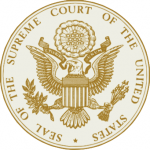Seeking a Practical Age Discrimination Standard
In Gross v. FBL Financial Services, Inc., being argued Tuesday, March 31, the Supreme Court will address how to analyze mixed-motive claims under the Age Discrimination in Employment Act (ADEA). Nothing less than meaningful access for employment discrimination plaintiffs to relief under Title VII of the Civil Rights Act of 1991 (CRA of 1991) is at stake.
Background
To understand the importance of the Gross case to employment discrimination law, it is necessary to understand a fundamental distinction that has arisen in so-called individual disparate treatment cases, where a worker claims to have suffered an adverse employment action based on a protected characteristic under an employment discrimination statute. Initially, most of these cases were handled under the McDonnell Douglas pretext framework, which requires an employee to establish that the employer’s putative legitimate, nondiscriminatory reasons for its employment actions are pretextual and the real reason for the action was unlawful discrimination.
In 1989, the Supreme Court developed another model for proving disparate treatment discrimination in Price Waterhouse v. Hopkins. There, a woman denied promotion to partner in an accounting firm was able to show both legitimate and illegitimate motives for the employment action. Although a plurality of the Court decided that the plaintiff could make out a case by showing the illegitimate reasons for not promoting her were the “motivating reason,” a significant concurrence by Justice O’Connor set up that the illegitimate reason had to be a substantial part of the employer’s motivation and direct evidence was required to show that motivation. Many courts thereafter followed Justice O’Connor’s formulation.
Two years later, Congress enacted the CRA of 1991, requiring only that the illegitimate reason had to be motivating. Unfortunately, Congress did not make clear its intentions about what framework should govern age discrimination claims under the ADEA.


